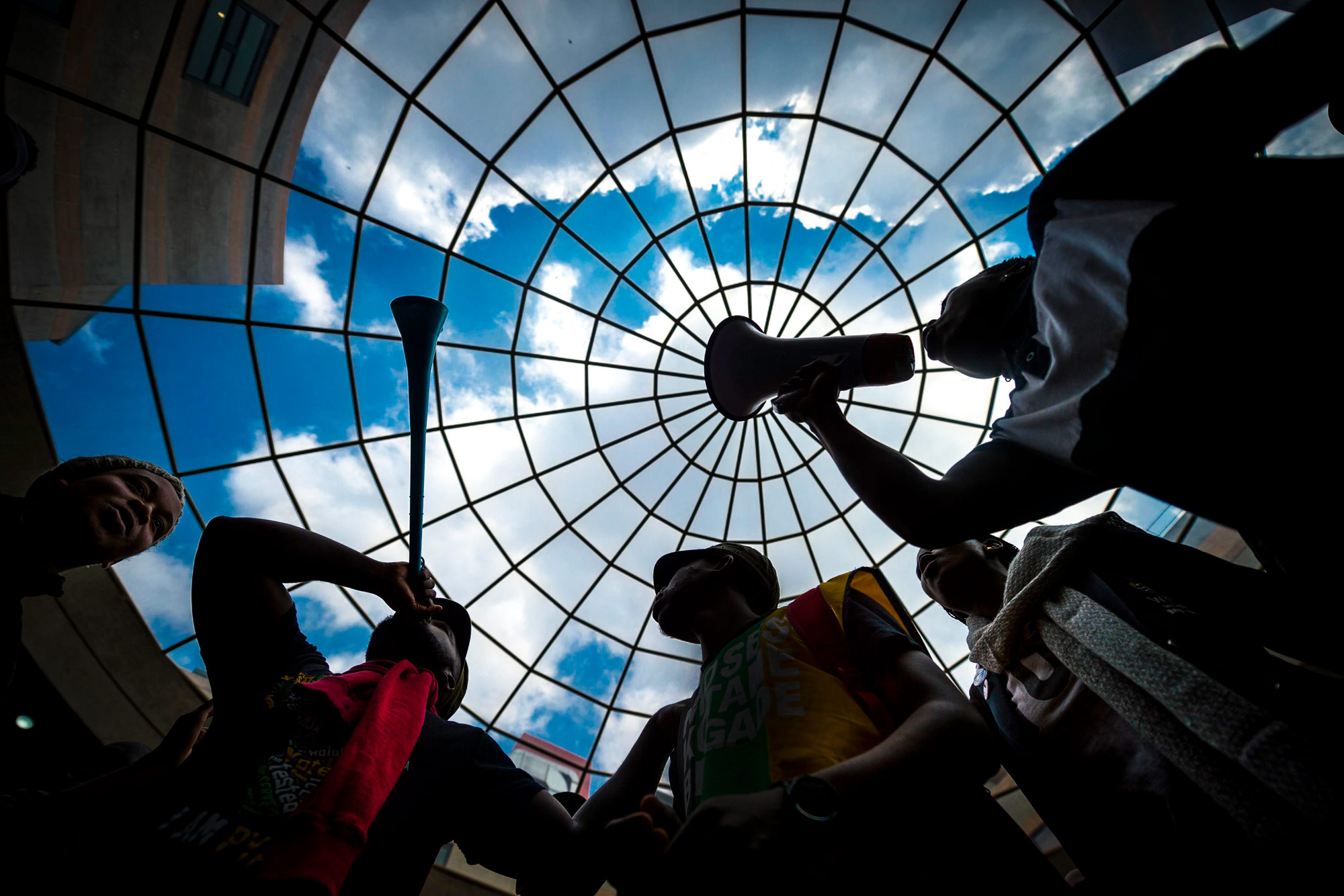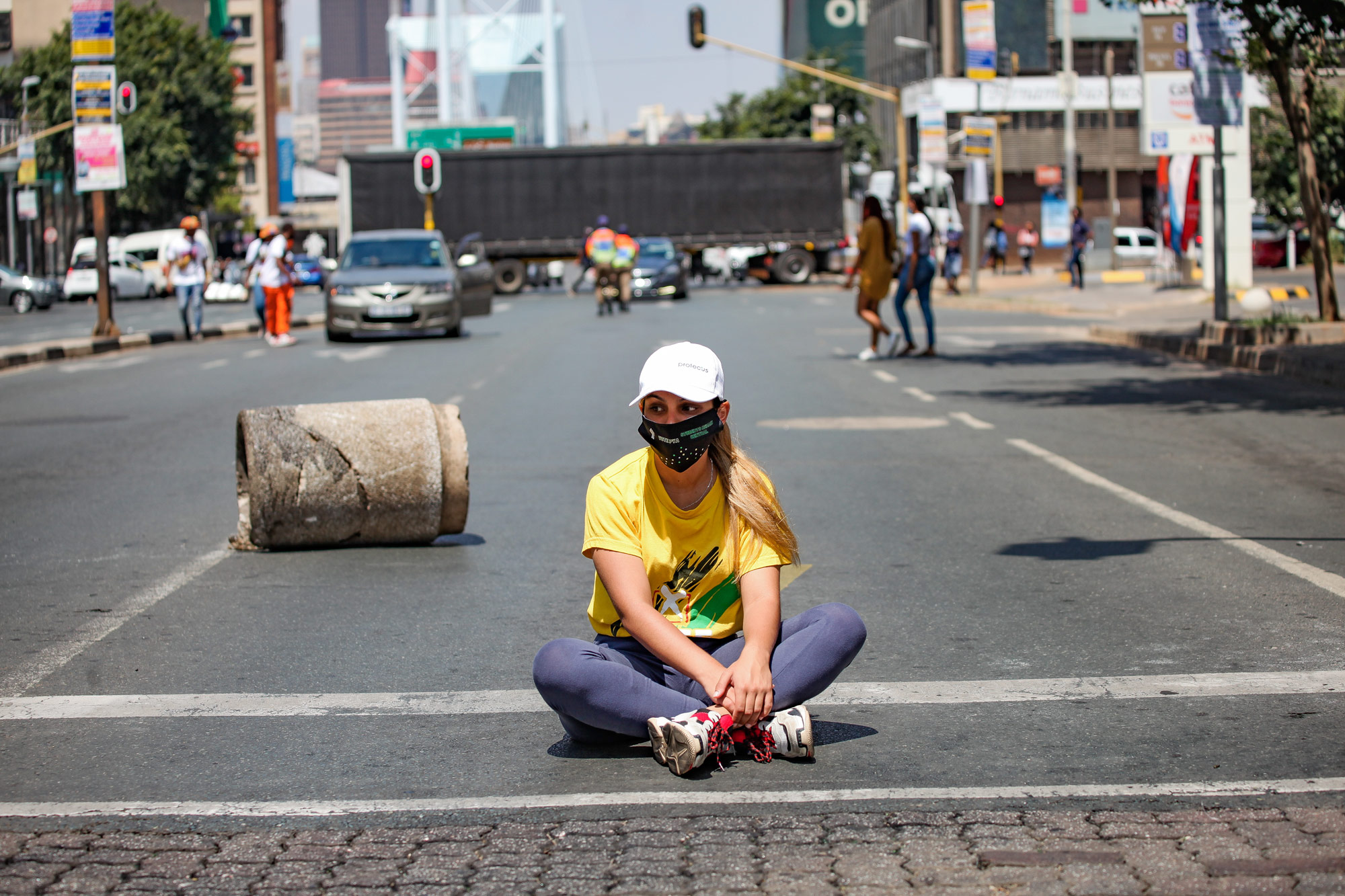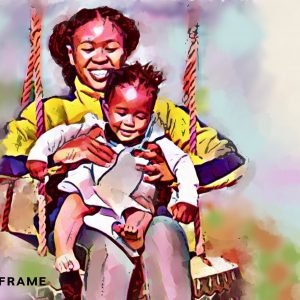We need to talk about making tertiary education free
Current mechanisms to fund those in higher education are inadequate. Critical and rapid changes are needed to provide this generation with universal, free and quality education.
Author:
24 August 2021

Six years after Fees Must Fall protests erupted on campuses throughout South Africa, the country is still far from achieving the goal of universal, free and quality tertiary education for all that inspired a generation of students. The time has come for a national conversation on how to achieve this noble vision and expand the tertiary education sector in ways that dramatically upgrade the population’s level of educational attainment within one generation.
In December 2017, on the eve of the ANC’s national conference, former president Jacob Zuma announced an increase in the threshold that would be used to provide financial aid to students in tertiary education, to those whose families had an annual income of less than R350 000 a year. The new policy would apply to first-year students and be implemented over five years. The previous threshold was an annual income of R122 000 a year. While the National Student Financial Aid Scheme (NSFAS) had previously provided bursaries and loans to qualifying students, the new system would provide bursaries that did not have to be repaid.
Related article:
However, this has not resulted in a significant increase in access to tertiary education, according to an analysis of statistics provided in the “Higher Education and Training” chapter in the National Treasury’s Budget 2021: Estimates of National Expenditure. The percentage of NSFAS beneficiaries at 26 universities and 50 technical and vocational educational and training (TVET) colleges increased to 36.1% of total enrolments in 2020-2021 from 26.9% in 2017-2018, the last year of the previous scheme.
University enrolments stalled at just under 1.1 million during the first three years of the new system to 2020-2021. TVET college enrolments declined by 3.4% to 680 000 during this period while NSFAS beneficiaries at these colleges increased by 6.6% to 240 406. But NSFAS beneficiaries at universities increased by 75% to 395 591 . The National Research Foundation (NRF) provided funding of R2.4 billion to 11 918 postgraduate students during 2019-2020. The Funza Lushaka bursary scheme provided R942 million to 10 469 students in education, which was equivalent to only 5% of enrolments.
At the much smaller National Institute for the Humanities and Social Sciences, 97 of the students they funded completed their PhDs in 2019-2020, bringing the five-year total to 229. This means that 1.1 million (63.2%) of the 1.8 million students enrolled in tertiary education do not get state support. While NSFAS provides funding to about half of undergraduate university and TVET students, it is the lack of funding for postgraduate studies that pulls the average down. The NRF provides funding to only 6.9% of postgraduate students.
The state of NSFAS
A rough estimate is that it would cost about R121 billion a year to provide free tertiary education to all, of which R78 billion would be new money after taking into account NSFAS spending of R43 billion for the 2021-2022 financial year. NSFAS would need to double its spending to R86 billion a year. The NRF’s spending on bursaries would have to increase to R35 billion. But NRF chief executive Fulufhelo Nelwamondo has highlighted the dire funding shortage for postgraduate studies. “Last year, the NRF had a huge funding cut of R763 million. Despite this budget slash, we still have to deliver on our mandate,” he says.
There was another wave of student protests at the beginning of the 2021 academic year after NSFAS said it had a funding shortfall of R5.7 billion and could not confirm funding eligibility for first-time entrants. The 2021 budget report said Cabinet had approved reductions to the department’s baseline of R24.6 billion over the three-year medium-term expenditure framework.

“These reductions include R6.8 billion on the allocation to the National Student Financial Aid Scheme for loans and bursaries, R5 billion on university subsidies and R947.1 million on TVET college infrastructure grants. The reductions to university subsidies will likely lead to a decrease in the number of first-year enrolments,” said the treasury.
Using an average cost per student of R59 508 for 2021, NSFAS would not have been able to provide funding to 95 785 students, which was equivalent to 52% of the 184 315 first-time new entrants for the 2021 academic year. The draconian budget cuts were retrogressive – they would have resulted in the first drop in tertiary enrolments since 1998 – and a clear violation of the state’s constitutional obligation to progressively realise the right to further education.
Escalating student debt
South Africans witnessed a watershed moment in post-apartheid history on 10 March when Mthokozisi Ntumba, a 35-year-old father of four, became the first person to die during protests against the government’s austerity policies. The police shot Ntumba, a bystander who was coming out of a clinic in Braamfontein, Johannesburg, during a protest by students from the University of the Witwatersrand. They were demanding that the higher education sector write off their historical debts, which were preventing them from registering for the new academic year.
Related article:
Student debt at universities has escalated to R14 billion, according to Universities South Africa chief executive Ahmed Bawa. This includes current and past students. Most of this debt is owed by “missing middle” students from families with an annual household income of R350 000 to R600 000. They cannot afford higher education but are not impoverished enough to qualify for free tertiary education.
“There are different estimates of the number of students in this category, as the institutions do not have socioeconomic data. The ministerial task team appointed … in 2016 estimated the figure to be approximately 20% of undergraduate students,” said the department in a presentation to the ANC national executive committee (NEC) at the end of March.
The Ikusasa Student Financial Aid Programme (ISFAP) was established in 2018 after the ministerial task team process, to test possible models. It estimated that R61 billion was required to fund “missing middle” students. ISFAP models assumed that the government would cover all or part of student debts but the treasury refused, said the department in its ANC NEC presentation. The government needed to provide R38.7 billion and the private sector would provide R22.4 billion. The model offers blended funding, a combination of grants and loans provided on a sliding scale depending on household income.

But the ISAP has raised only R850 million, which has funded more than 2 000 students at 11 universities. Markets are designed to cherry-pick prime customers. There are no market solutions that address social issues such as increased access to tertiary education for sub-prime customers. The department said in its presentation that the ISFAP model does not provide a universal solution to the funding required to address the needs of “missing middle” students. Bawa says another way to address the problem is to provide free tuition. This would cost about R18 billion, but still require “missing middle” students to cover their other expenses. The state would have to cover the historic debt.
Higher Education and Training Minister Blade Nzimande said on 11 March 2021 that Cabinet had decided his department should reprioritise its budget and fund the R5.7 billion NSFAS shortfall. In the ANC NEC presentation, the department said it would propose further reductions (in addition to the already approved budget cuts) of R3.1 billion from its voted funds. This comprised R2.5 billion from university subsidies, R500 million from TVET subsidies and R100 million from goods and services. The department would also raid R3.3 billion from the National Skills Fund, which would enter into an agreement with NSFAS. The budget cuts, the highest as a percentage of overall spending in any government department, could collapse the higher education sector.
Lifting society
According to a report by Mamphokhu Khuluvhe and Edzani Netshifhefhe, universities (R93.2 billion) and TVET colleges (R16.7 billion) had total revenues of R109.9 billion in 2019-2020. University revenue streams were made up of state subsidies (42%), fees (33%) and third-stream income (25%), a broad category that includes money from contract research, entrepreneurial activity, endowments and investments. The state subsidy – R39.2 billion – accounted for about 0.8% of gross domestic product (GDP). The Fees Must Fall movement focused on only one of these revenue streams. It did not address wider issues such as the need to lift the level of educational attainment of society as a whole.
Sociologist Martin Trow described three types of higher education systems. An elite system views access to higher education as a privilege. Such systems have gross enrolment ratios (or participation rates) of less than 15%. The ratio measures the percentage of the population aged about 18 to 23 that is enrolled in higher education. Mass systems, where access to higher education is a right for those with certain qualifications, have participation rates of up to 50%. In universal systems, with participation rates of more than 50%, the function of higher education is to adapt the entire population to social and technological change.
Related article:
In South Africa in 2018, there was a participation rate of 18% for Africans, 55% for whites and 22% for people of all races. By comparison, South Korea and Chile had participation rates of 95.9% and 90.1% respectively that year. The average for members of the Organisation for Economic Co-Operation and Development (OECD) was 74.4%. Economists have tried to measure the relationship between the quantity and quality of education and economic growth.
Robert Barro and Jong-Wha Lee developed a measure that uses average years of schooling and performance on student and adult skills assessments. Other economists look at the population’s levels of educational attainment, a proxy for human capital, which can be an input into equations that analyse the sources of economic growth. In South Africa, according to the OECD, 6% of people aged 25 to 34 had a tertiary qualification in 2018. In South Korea, that figure was 70%. The OECD average was 45%.
Insufficient resources
South African university enrolments doubled between 1994 and 2019. TVET college enrolments increased by 88%. But the government did not allocate sufficient resources to accommodate the growth in enrolments. The National Development Plan said: “The university sector is under considerable strain. Enrolments have almost doubled, yet funding has not kept up, resulting in slow growth in university lecturers, inadequate student accommodation, creaking university infrastructure and equipment shortages.” TVET colleges are chronically underfunded. The International Finance Corporation says the student accommodation funding gap for universities and TVET colleges will increase to R176 billion by 2025.
Today, South Korea, with a population of 51.7 million has 2.2 million university enrolments. This is double the figure for South Africa, which has a population of 60.1 million. The National Development Plan and White Paper for Post-School Education and Training targets of 27% and 25% participation rates respectively are way too low. South Africa must make a rapid transition within one generation towards a universal system of higher education with a tertiary enrolment rate of at least 75%. This will require the tertiary education sector to more than double in size.
Related article:
The basic education sector will also have to more than double its annual output of bachelor passes from about 220 000, including independent schools. South Africa can no longer postpone equalising its public and private basic education systems. This will require an unprecedented mobilisation of resources, including finance, infrastructure, technology, equipment and educators. For example, public schools will have to double the number of teachers to have the same learner-to-educator ratio as independent schools.
Within the current budget envelope, tertiary education funding would have to increase to more than 3% of GDP during the catch-up phase – above international benchmarks. But if implemented within a new macroeconomic policy framework with a fiscal stimulus that can significantly increase GDP growth for the next decade and beyond, the budget would generate the resources to pay for the transition towards a universal system of tertiary education.




